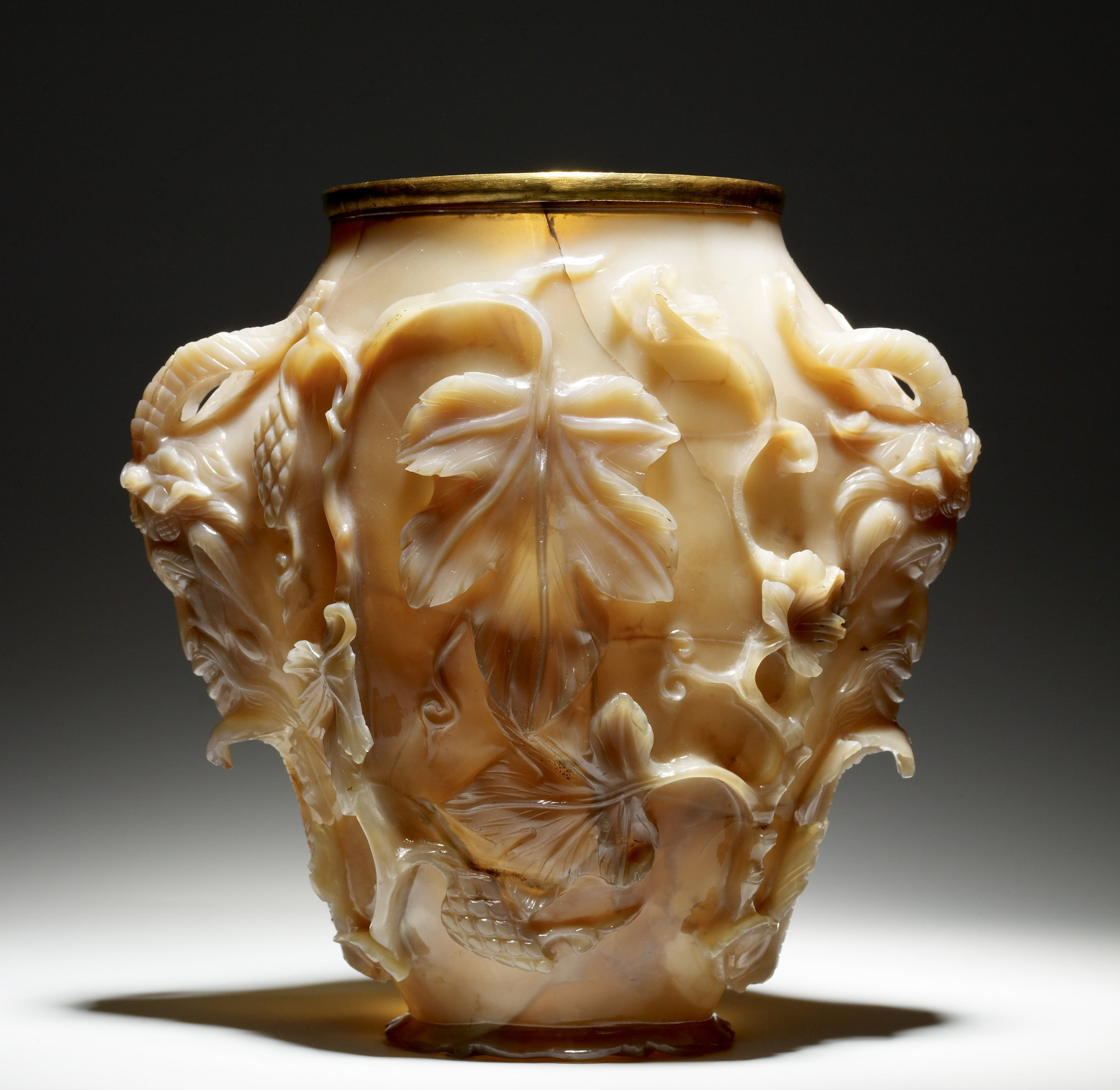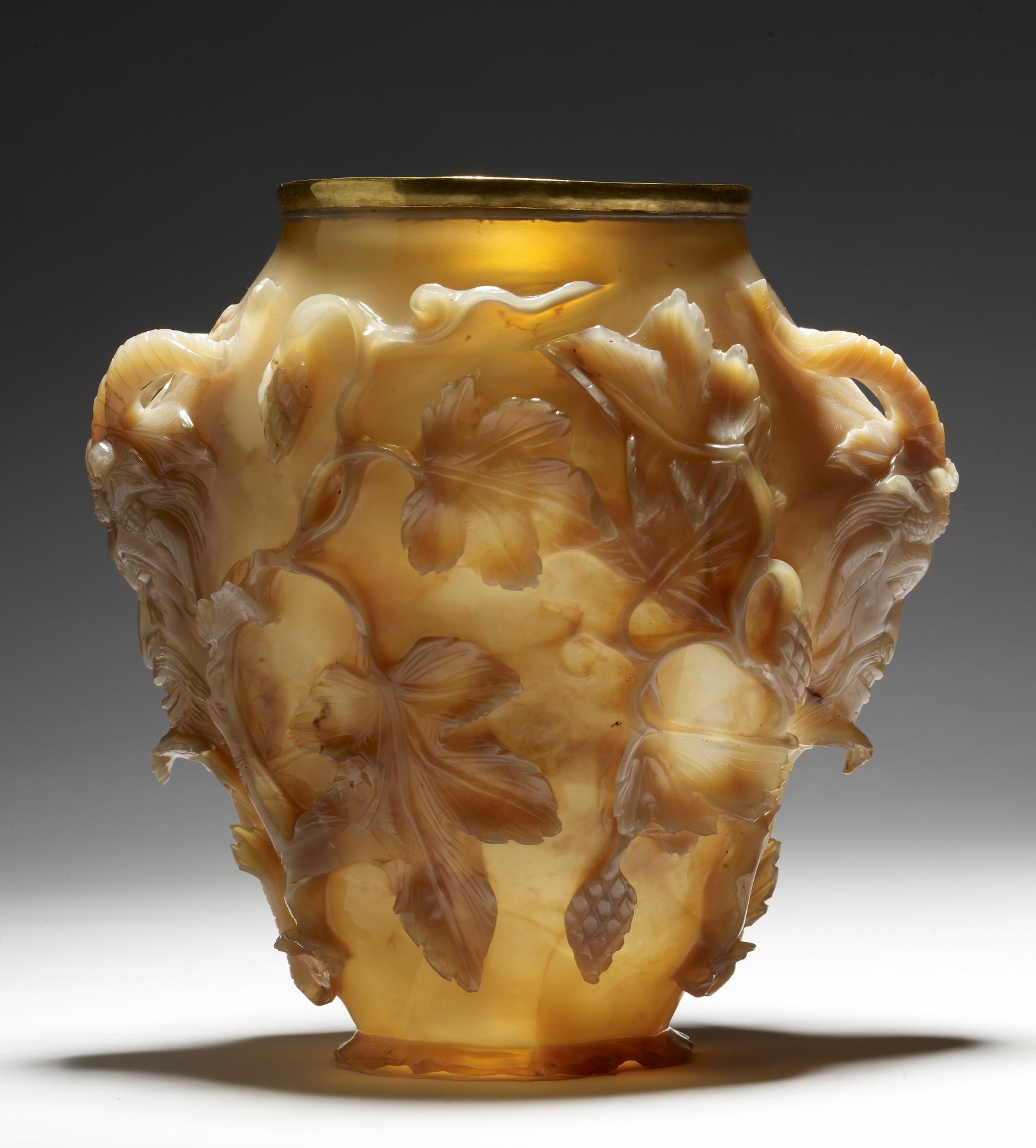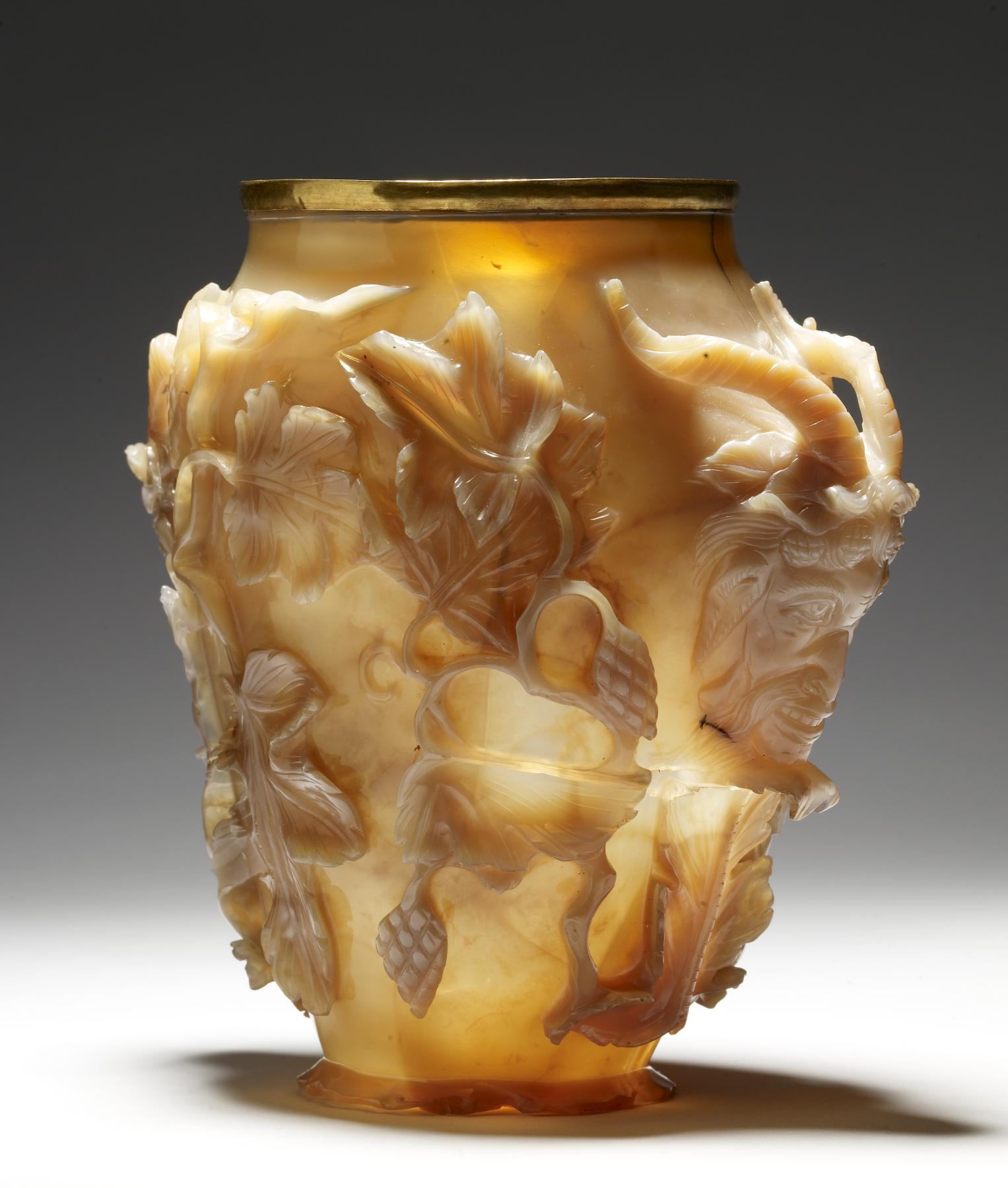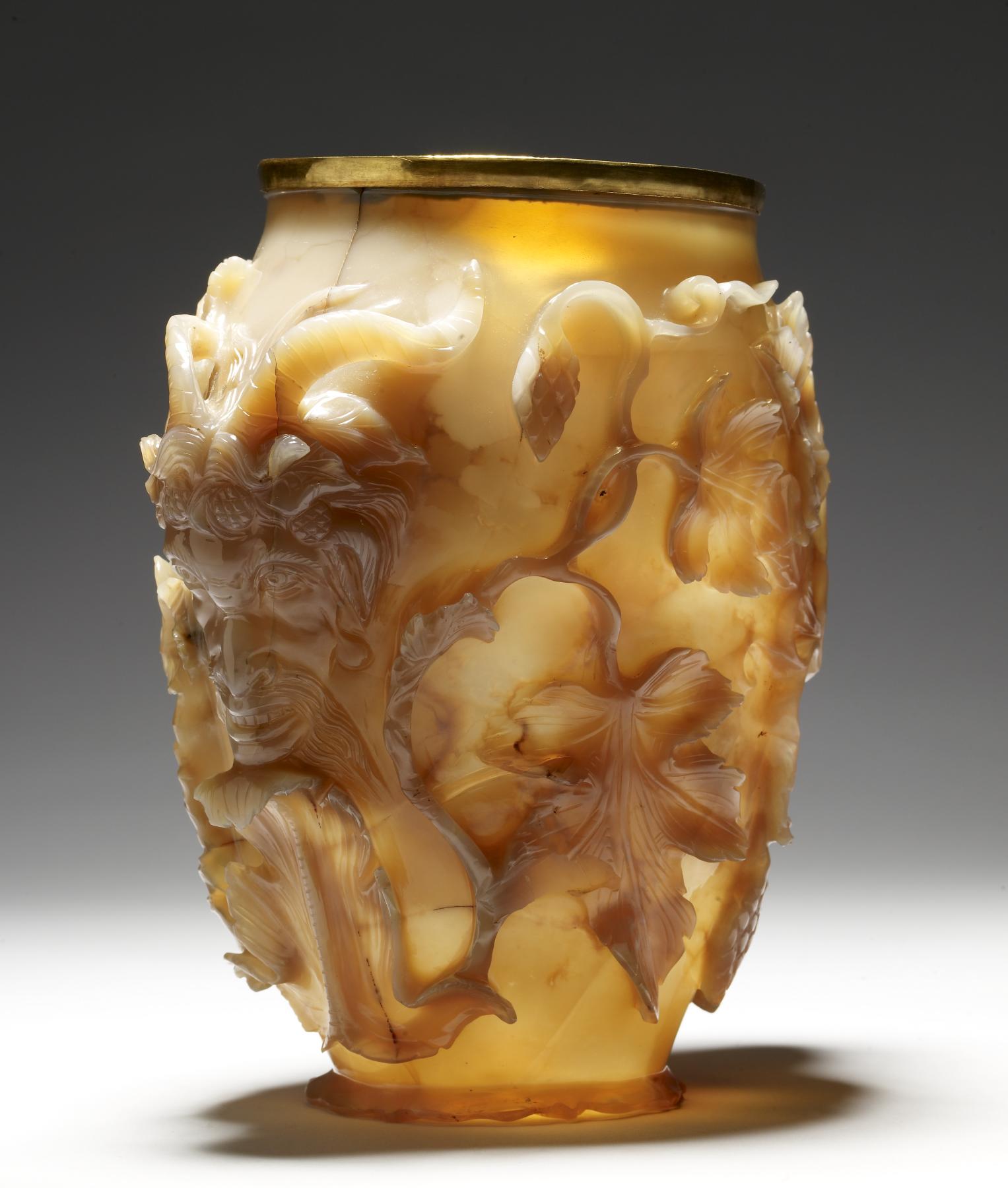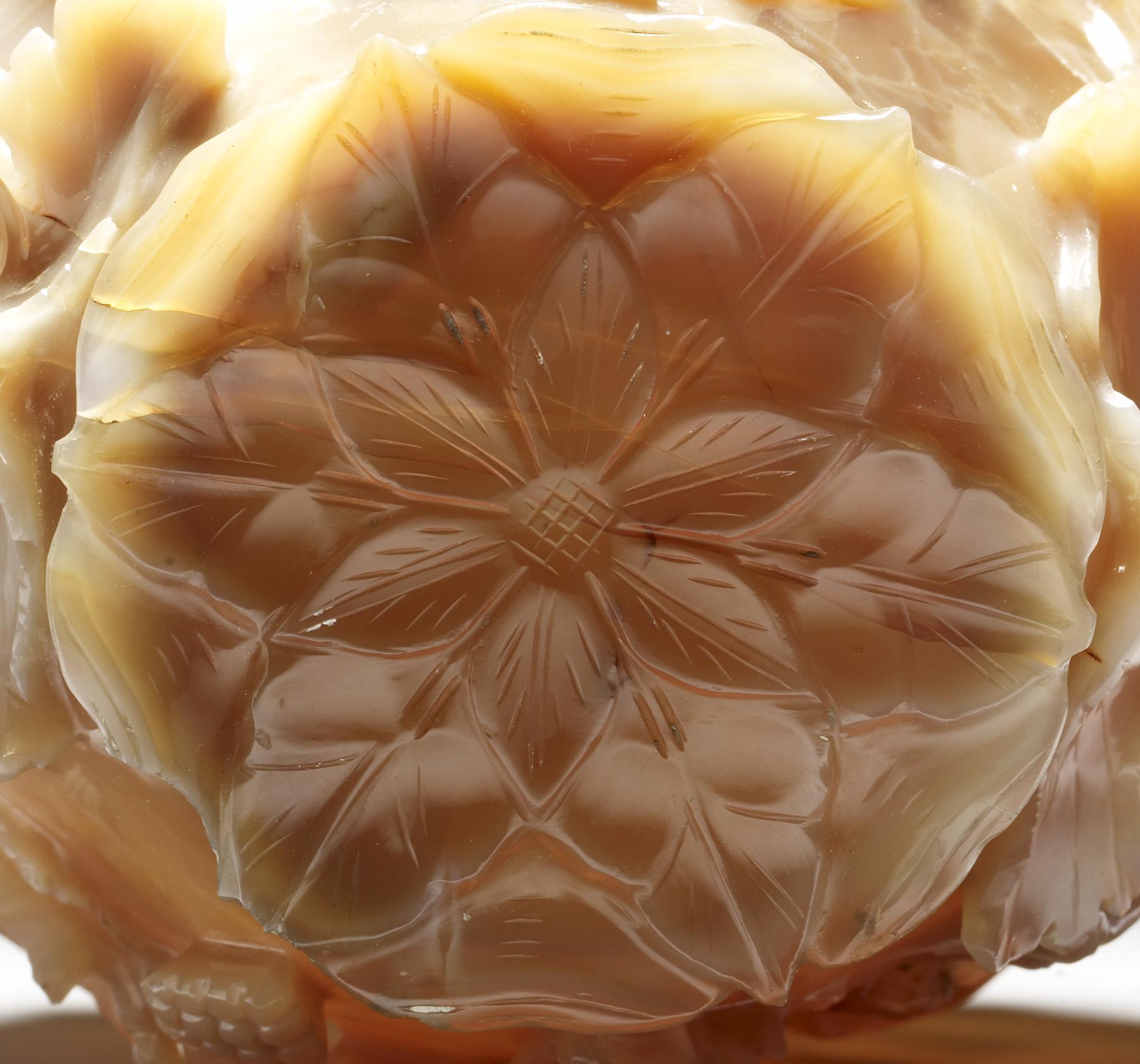The "Rubens Vase"
Carved in high relief from a single piece of agate, this extraordinary vase was most likely created in an imperial workshop for a Byzantine emperor. It made its way to France, probably carried off as treasure after the sack of Constantinople in 1204 during the Fourth Crusade, where it passed through the hands of some of the most renowned collectors of western Europe, including the Dukes of Anjou and King Charles V of France. In 1619, the vase was purchased by the great Flemish painter Peter Paul Rubens (1577-1640). A drawing that he made of it is now in Saint Petersburg, State Hermitage Museum, inv. 5430. The subsequent fate of the vase before the 19th century is obscure. The gold mount around its rim is struck with a French gold-standard mark used in 1809-1819 and with the guarantee stamp of the French departement of Ain. A similar late Roman agate vessel, the "Waddesdon Vase" or "Cellini Vase," in now in the British Museum, London.
Provenance
Provenance (from the French provenir, 'to come from/forth') is the chronology of the ownership, custody, or location of a historical object.
Foire Saint Germain Sale, Paris, 1619; Peter Paul Rubens, Antwerp, 1619, by purchase; Daniel Fourment, Antwerp, ca. 1626-1628, by purchase; Emperor Jahangir of India [date of acquisition unknown], by consignment; Dutch East India Company, prior to 1635, by confiscation; Holland, 1818; William Beckford, Fonthill Abbey, Wiltshire, 1818, by purchase; Sale, English & Fasana, Bath, November 20, 1845, no. 167; Alexander Hamilton, 10th Duke of Hamilton, London, 1845, by purchase; William A. A. Hamilton, 11th Duke of Hamilton, 1852, by inheritance; William A. L. S. Douglas-Hamilton, 12th Duke of Hamilton, 1863, by inheritance; Sale, Christie's, London, June 17, 1882, no. 487; Samson Wertheimer, London, 1882, by purchase; Sale, Christie's, London, March 15, 1892; Alfred Morrison, London, 1892, by purchase; Sale, Christie's, London, June 12, 1899; Sir Francis Cook, Richmond, 1899, by purchase; Wyndham F. Cook, London, 1901, by inheritance; Humphrey W. Cook, London, 1905, by inheritance; Sale, London, Christie's, July 14, 1925, no. 90; Henry Walters, New York, 1925, by purchase; Sadie Jones (Mrs. Henry Walters), New York, 1931, by inheritance; Sale, Parke-Bernet, New York, May 2, 1941, no. 1316; Walters Art Museum, 1941, by purchase.
Exhibitions
| 1998-2001 | Highlights from the Collection. The Walters Art Gallery, Baltimore. |
| 1980 | Undercover Stories in Art. The Walters Art Gallery, Baltimore. |
| 1971-1972 | World of Wonder. The Walters Art Gallery, Baltimore. |
| 1947 | Early Christian and Byzantine Art. Baltimore Museum of Art, Baltimore. |
Geographies
Turkey, Istanbul (Constantinople)
(Place of Origin)
Constantinople (Kid-Friendly)
Measurements
H: 7 5/16 x W: 7 5/16 x D: 4 3/4 in. (18.6 x 18.5 x 12 cm)
Credit Line
Museum purchase [formerly part of the Walters Collection], 1941
Location in Museum
Accession Number
In libraries, galleries, museums, and archives, an accession number is a unique identifier assigned to each object in the collection.
In libraries, galleries, museums, and archives, an accession number is a unique identifier assigned to each object in the collection.
42.562

